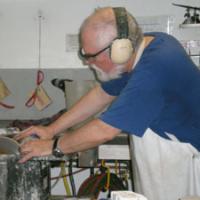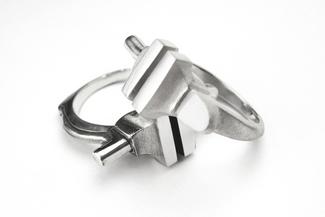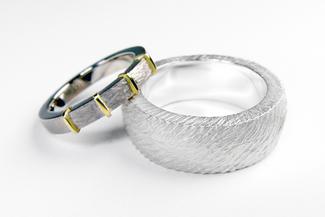Delft Clay Casting
Have you ever been curious about the casting process? Learn some of the basics while practicing two-part sand casting using a Delft Clay casting setup to create one-off objects in silver and bronze. Using Delft Clay, students have the capability to mold ring blanks, duplicate simple non-brittle natural materials for pendents, or create components for larger pieces. Students will have a chance to cast and clean a number of pieces during the class to take home. Molded objects should be sturdy, non-brittle, and without undercuts; acceptable materials might include wedding bands, solid branches, sea shells or stones, and any number of man-made objects.
To promote safe working conditions, class will meet for 3 hours on August 10th and 3 hours on August 11th.
Meet the instructor

David Baird has been making jewelry for nearly four decades. He received his bachelor's degree at the Evergreen State College, and his MFA from The School of the American Craftsman at Rochester Institute of Technology. He also has a GG (Graduate Gemology certificate) from the GIA.
David sells his work nationally and has taught classes and workshops for at least 30 years around New England including Metalwerx, DeCordova Museum School, and Lexington Arts and Crafts Center. More recently he has been developing specialized jigs to make bench processes easier for his students. The Directed Open Studio courses at Metalwerx are led by David because of his vast knowledge about the many facets of metalworking.
Over the past 15 years, David has expanded his repertoire to include lapidary cabbing and carving. He now devotes his time between two studios, both lapidary and jewelry, taking on commissions by request. His studio is located at the Waltham Mill Buildings, near Metalwerx where still he teaches regularly.
Materials & Tools
There is a $65 materials fee for this workshop payable upon registration. The materials kit included delft clay, sterling silver casting grain, bronze casting grain, brass stock, and various other materials needed to complete casting projects.
- object they wish to cast, smaller than 60mm (i.e. small branches, shells, stones, or anything else that's non-brittle and won't easily break under light pressure)
- any extra gold or silver that you may wish to turn into jewelry
- drawing implements and notebook
- any of your favorite jewelry making tools



